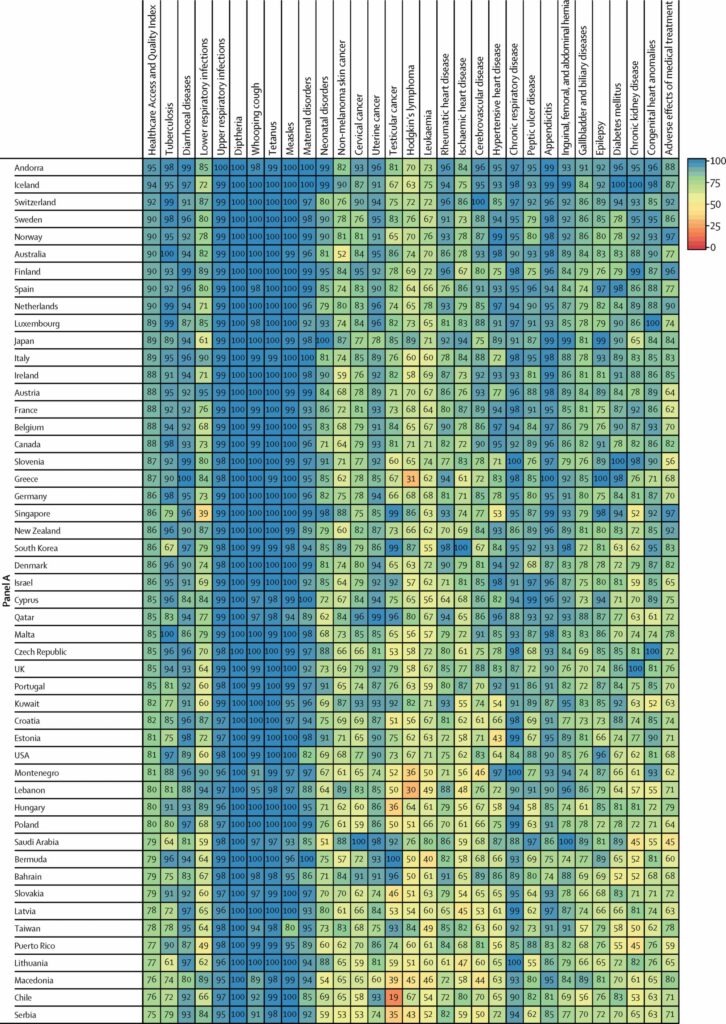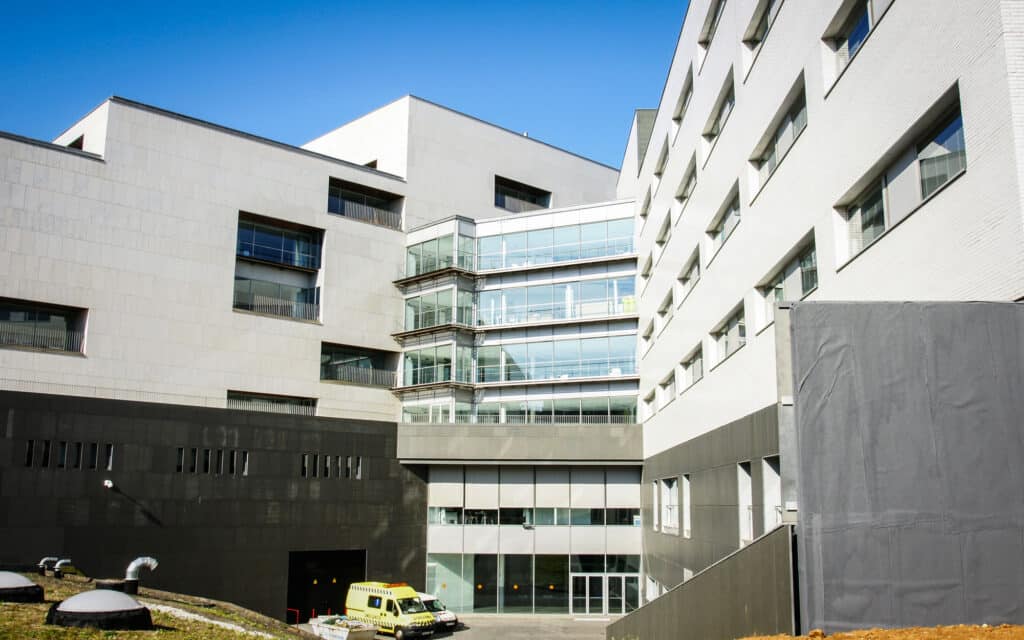Andorra is known for its agreeable cost of living, low taxes and excellent schools. But something future residents might not know about the world’s 16th smallest country is that it also offers excellent healthcare.
By excellent, I don’t just mean ‘really good’. According to a study published by The Lancet in 2017, the Andorran healthcare system is actually the best in the world.
Yep, Andorra ranked first in the Healthcare Access and Quality Index (HAC) with a score of 95 out of 100.
But what does this mean in the real world? Well, I’ve been a contributor and beneficiary of this system for the better part of a decade. In this guide I aim to show you exactly what healthcare looks like in Andorra.
Origin of Andorra’s Healthcare System
Believe it or not, Andorra’s healthcare system is over a century old. It dates all the way back to 1918 when the Spanish flu (which actually had nothing to do with Spain) was wreaking havoc on the world.
Although created in response to the pandemic, the parish health boards remained in place once it ended.
This was a positive outcome, as prior to that communes were essentially on their own when it came to sourcing physicians and enacting health laws.
In 1935, a national committee was formed in accordance with the Health Act to work with the boards. Unifying them in this way is ultimately what has enabled Andorra to provide such exceptional healthcare to its residents.

A Higher Than Average Life Expectancy Rate
Apparently Andorra’s top notch healthcare system is also partially responsible for its residents living longer.
Statistics from the World Health Organisation (WHO), the US Census Bureau and the Global Burden of Disease study all place Andorra near the top for life expectancy.
Depending on which one you consult, men can expect to reach at least 80 years old and women around 85. Which I’m sure you’ll agree, aren’t bad innings.
In addition to having quality healthcare, other reasons for Andorrans’ longevity include access to clean water and fresh air, a generally healthy lifestyle, a slower pace of life, less stress and a penchant for outdoor activities.
Seriously, there aren’t many places you can walk in the country without climbing up or down a few hills. Or three flights of stairs.
This means that people don’t just live longer here, they’re also healthier in old age.
How Much Does Healthcare Cost?
I don’t want to profess to have a side-by-side comparison between expenses in different countries, so please permit how subjective this all is. Prior to living in Andorra, I have had treatments in both Australia and Canada, so this is my point of reference.
If I had to sum up the cost of healthcare in Andorra, it would be ‘pretty reasonable‘. Before any reimbursements, dental visits cost at most, 20% of the price here than Australia or Canada.
A visit to a GP is around half as much. Physio is around 75%.
Based on research and reports from friends about Thailand, Andorra’s healthcare costs are similar to what you’d expect to pay at a premium facility like Bumrungrad or Bangkok Hospital.
When it comes to medications, prices are generally 10% lower than you’ll find in Spain. This is thanks to the lower value added tax in Andorra.

Social Security Coverage
Healthcare and social security are both regulated by the same organisation—Caixa Andorrana de Seguretat Social (CASS). For full-time working residents, membership with CASS is mandatory.
Most expats in Andorra are self-employed, using a method called ‘compte propi’ for their residency application. In this scenario, it’s typical to contribute €533.87 per month to CASS.
In return, they will reimburse 75% to 100% of your medical expenses depending on the service or procedure undertaken. This includes prescriptions.
For a stay in hospital you can expect to get back 90%, while dental work and GP visits are slightly lower, at 75%. Childbirth and work-related accidents are both covered 100%.
Services not authorised by CASS are reimbursed at a standard rate of 33%.
All in all, healthcare in Andorra doesn’t cost that much.
Of course, this only applies to active (full-time) residents. If you have passive resident status, you are required by law to take out private health insurance.
Elsewhere in Europe
Another great thing about CASS is that it covers you beyond Andorra’s borders. Thanks to the social security agreements Andorra has with France, Spain and Portugal, you can access healthcare while visiting those countries as well.
Before leaving Andorra, you can visit the CASS office, or login to the online portal to download a certificate to cover you while you’re away. This reduces any out of pocket expenses in the event of something going wrong.
Talks are also underway with the European Union, which, if successful, will result in social security agreements with all countries in the EU within the next few years.

Private Health Insurance
Passive residents in the country aren’t eligible for CASS, and must hold a valid private health insurance policy.
There are plenty of options, and as you’d expect in any country, the policy premiums vary based on your age and medical history.
Insurance is offered by all each of the banks, local insurance companies, as well as representatives for some Spanish insurers.
CASS Complimentary Health Insurance
Although mainly for passive residents who aren’t eligible for social security, taking out private health insurance even if you’re already covered by CASS does offer some benefits.
In addition to access to private clinics and medical care, private insurance covers your CASS reimbursement shortfall. As a fulltime employee, you are also entitled to supplementary benefits should you need to take sick leave.
Something that may be different depending on where you’re from is that you’re allowed to seek treatment in public health facilities even if you’re covered by private health insurance.
Generally the premium will set you back around €30-110 per month, per person. If you or your family make regular use of the healthcare system, it might be worth exploring.
Andorra’s Hospital and Health Care Centres
Andorra has one hospital and 11 primary health care centres to attend to its residents’ medical requirements. With a total population of a little over 80,000, that’s plenty.
Add to that the 50+ pharmacies spread throughout its seven parishes, and you’ll see that even accessing medication (prescription and non-prescription) is a breeze in Andorra.
With 192 private rooms and a full complement of qualified medical staff, Hospital Nostra Senyora de Meritxell can handle most situations, emergency and otherwise.
However, should an emergency present itself that cannot be dealt with at Andorra’s local hospital, you’ll be flown by helicopter to either Barcelona or Toulouse for treatment.
In addition to all of the above, Center Geriàtric Sant Vicenç d’Enclar in the age-friendly city of Andorra la Vella provides care for the elderly, while El Cedre offers care for the elderly, people with disabilities and respite for carers.
What Is a Referring Doctor?
Having multiple physicians attend to your various ailments can potentially lead to confusion. Although it’s normal to see different doctors for different issues, enlisting someone to oversee your medical journey is extremely useful.
Recognising this, Andorra’s healthcare system stipulates that everyone enrolled in CASS must nominate a GP (or paediatrician in the case of a child) as their referring doctor.
This person is there to provide more personalised general health care. It’s their job to monitor your health year-on-year. As the first point of call, they can make an initial diagnosis before referring you to a specialist for further treatment.
Final Thoughts on Seeking Healthcare in Andorra
This was a brief overview of Andorra’s healthcare system. You should have a better understanding of how it works, what it costs and where you can access help.
Hopefully you won’t ever have to test it for yourself, but if you ever do I’m sure you’ll agree that Andorra deserves its positive rankings.
Leave a comment if you have any questions. I’m happy to respond if I can.

Leave a Reply